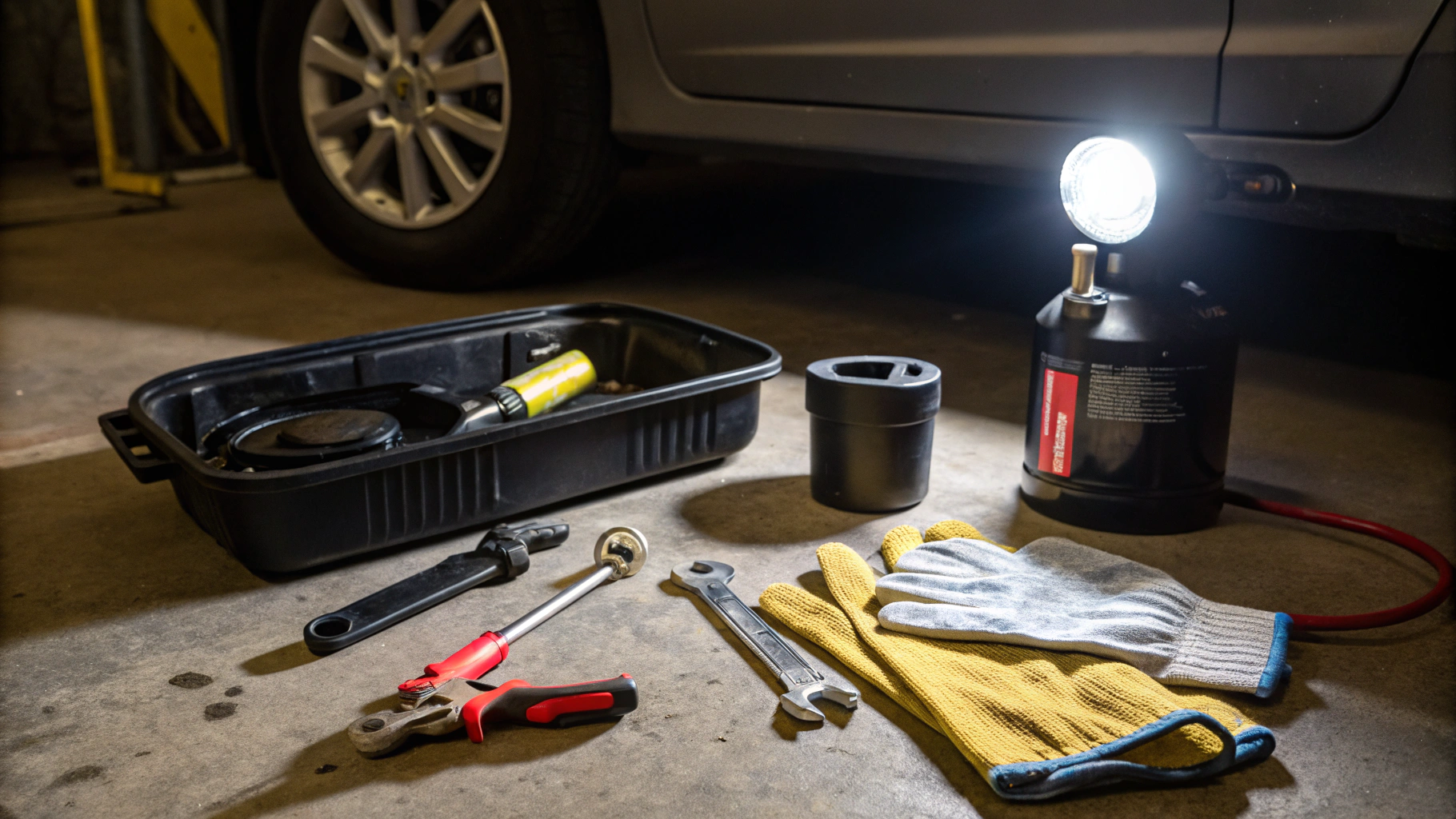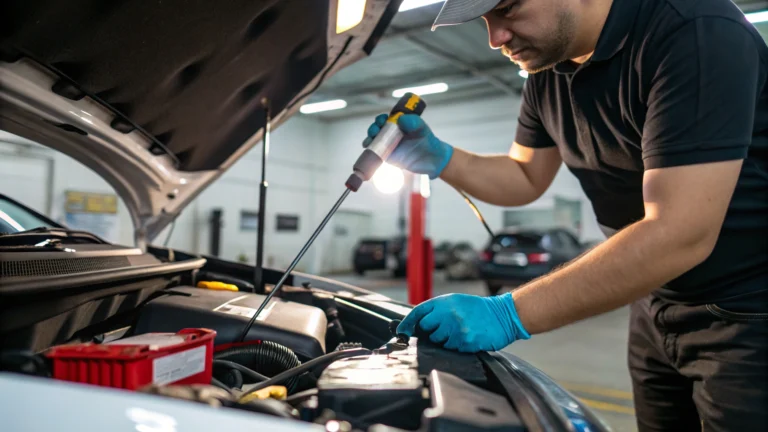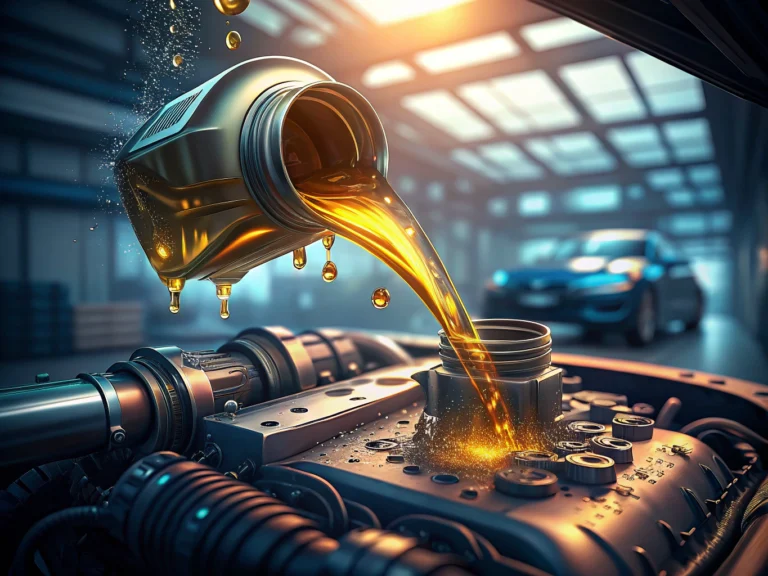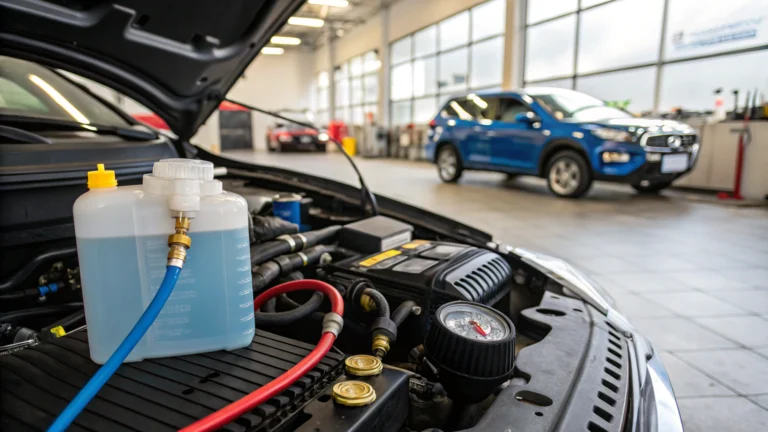Essential Tools DIY Oil Change: Must-Have Gear for Success
Table of Contents
When it comes to performing routine maintenance on your vehicle, having the essential tools DIY oil change requires is crucial for success. This process not only saves you time and money but also enhances your understanding of your car’s upkeep.
This article delves into the must-have equipment needed for a smooth DIY oil change, ensuring that you have everything you need at your fingertips to tackle this task with confidence.
Essential Tools DIY Oil Change Checklist
Before starting your oil change project, gathering the proper tools will make the process significantly easier and more efficient. Let’s explore the must-have items that should be in your oil change toolkit.
Oil Drain Pan
An oil drain pan is perhaps the most fundamental tool for any DIY oil change. This container collects the old oil as it drains from your vehicle’s oil pan. Look for models with splash guards to prevent spills, a sealed lid for storage until disposal, and sufficient capacity (at least 6 quarts for most passenger vehicles). Some premium drain pans feature built-in spouts that make transferring used oil to recycling containers much cleaner.
Socket Wrench Set
A quality socket wrench set is essential for accessing your oil drain plug. Most vehicles require a socket between 13mm and 17mm, though this varies by manufacturer. Ensure your set includes both metric and standard sizes to accommodate different vehicles. A socket wrench with an extension bar can be particularly helpful for reaching drain plugs in awkward locations. The proper socket size prevents stripping the drain plug, which can lead to expensive repairs.
When selecting a socket wrench, consider investing in a torque wrench as well. This specialized tool allows you to tighten the drain plug to the manufacturer’s exact specifications, preventing over-tightening that could damage the oil pan threads.
Oil Filter Removal Tools
Depending on your vehicle, you might need specific tools to remove the old oil filter. Common options include strap wrenches, socket-style filter wrenches, or cap wrenches. Having the right tool prevents filter damage and makes removal much easier, especially with filters that have been tightened down from previous changes.
Choosing the Best Oil Filter Wrench
The right oil filter wrench can make a significant difference in your DIY oil change experience. Several types are available, each with specific advantages for different situations.
Strap-Type Filter Wrenches
These adjustable wrenches use a flexible strap or band that wraps around the filter. As you apply pressure to the handle, the strap tightens against the filter. Strap wrenches work well for filters in tight spaces and can adjust to fit various filter sizes. They’re particularly useful for difficult-to-reach filters and provide excellent grip without damaging the filter housing.
Socket-Style Filter Wrenches
These specialized sockets are designed to fit specific filter sizes. They typically connect to your standard socket wrench and provide excellent leverage for stubborn filters. While less versatile than strap wrenches, they offer superior performance when you have the correct size for your vehicle’s filter.
Cap-Style Filter Wrenches
These fit over the end of the filter like a cap and are turned with a wrench. They’re ideal for filters located in recessed areas where other tools might not reach effectively. Cap wrenches require matching the exact diameter of your filter but provide excellent grip once properly sized.
When selecting an oil filter wrench, consider your vehicle’s specific filter location and accessibility. Some filters can be removed by hand, while others require specialized tools due to tight positioning or factory installation torque.
Car Jack and Safety Gloves Importance
Safety should always be your priority during a DIY oil change. Two essential safety items are proper vehicle lifting equipment and protective gloves.
Car Jack and Jack Stands
Most vehicles don’t provide enough ground clearance to comfortably work underneath without lifting. A hydraulic floor jack makes raising your vehicle simple, but it should never be used alone. Always secure your vehicle on jack stands rated for your vehicle’s weight before crawling underneath.
When positioning your jack and stands, consult your vehicle’s manual for the manufacturer-recommended lifting points. Using incorrect lifting points can damage your vehicle’s frame or components. Some vehicle owners prefer using ramps instead of jacks, which can be a safer alternative for oil changes specifically.
Safety Gloves Consideration
Motor oil can be extremely hot immediately after engine operation, and used oil contains contaminants that may irritate skin. Nitrile gloves provide excellent protection against both heat and chemicals while maintaining the dexterity needed for handling small parts.
Beyond hand protection, consider wearing safety glasses to protect against oil splashes. Oil in the eyes can cause significant irritation and temporary vision impairment. Additionally, having plenty of shop rags or paper towels nearby helps manage inevitable drips and spills.
Additional Helpful Tools
While not strictly essential, several additional tools can make your DIY oil change more convenient:
- Funnel with a flexible spout for adding new oil without spills
- Oil filter pre-fill tool to reduce dry starts
- Disposable oil change mat to catch drips and protect your garage floor
- Oil filter removal basin to catch residual oil when removing the filter
With the essential tools DIY oil change projects require, you’ll be well-equipped to handle this fundamental maintenance task with confidence. Remember to dispose of your used oil properly at a local recycling center, and keep track of your mileage to maintain a regular oil change schedule according to your vehicle manufacturer’s recommendations.
By investing in quality tools and taking your time with the process, you’ll soon find that changing your own oil is a satisfying and economical skill that helps extend your vehicle’s life while deepening your understanding of its mechanical systems.
As an Amazon Associate we earn from qualifying purchases.
Shop Related Products:
- Find oil drain pan on Amazon
- Find oil filter wrench on Amazon
- Find torque wrench on Amazon
- Find funnel on Amazon
- Find disposable gloves on Amazon
Frequently Asked Questions
What tools are needed for a DIY oil change?
Basic tools include an oil drain pan, socket wrench, oil filter wrench, and car jack. You’ll also need safety gloves to protect your hands, a funnel for adding new oil, and appropriate containers for disposing of used oil. It’s also recommended to have jack stands for safety when working under your vehicle.
Do I need special gloves for an oil change?
It’s recommended to use safety gloves to protect your hands from hot surfaces and oil. Nitrile gloves are ideal as they provide good protection against both heat and chemicals while maintaining the dexterity needed for handling small parts. Used motor oil contains contaminants that can irritate skin, making gloves an important safety item.
How do I know which oil filter wrench to buy?
Match the size and type of your oil filter to the appropriate wrench. There are several types available: strap-type wrenches are versatile and adjust to different sizes, socket-style wrenches connect to your standard socket wrench for stubborn filters, and cap-style wrenches fit over the end of filters in recessed areas. Consider your vehicle’s specific filter location and accessibility when selecting the right wrench.






